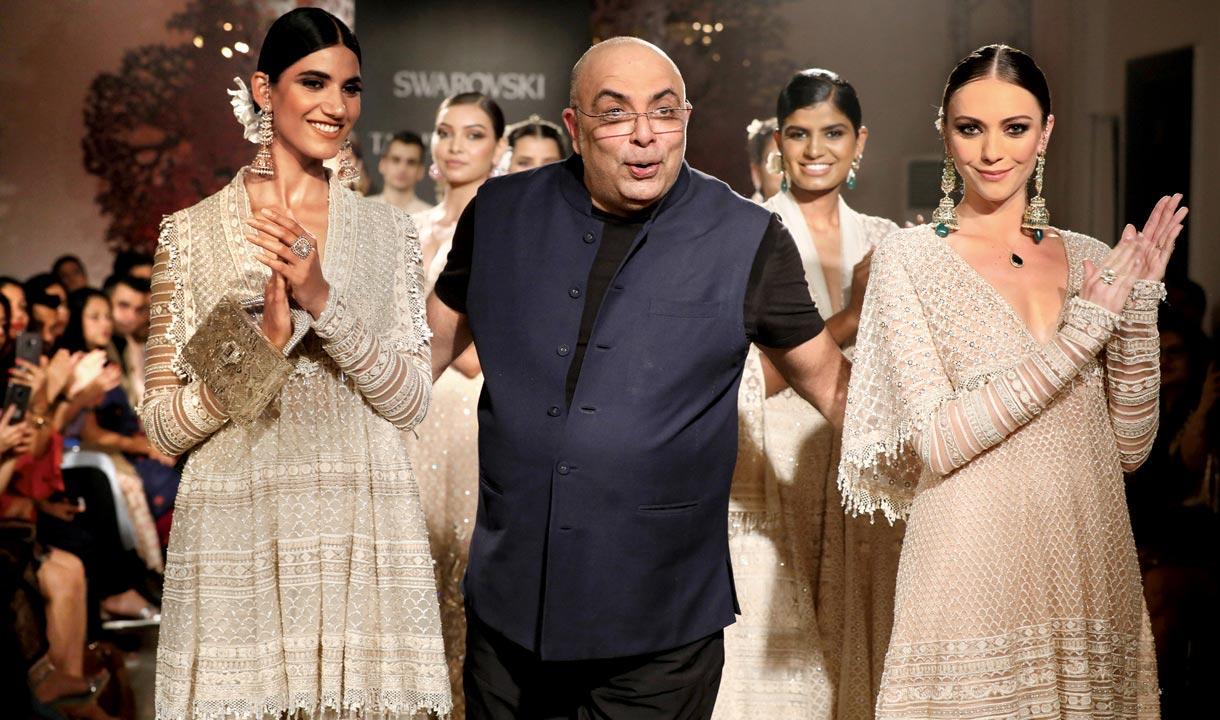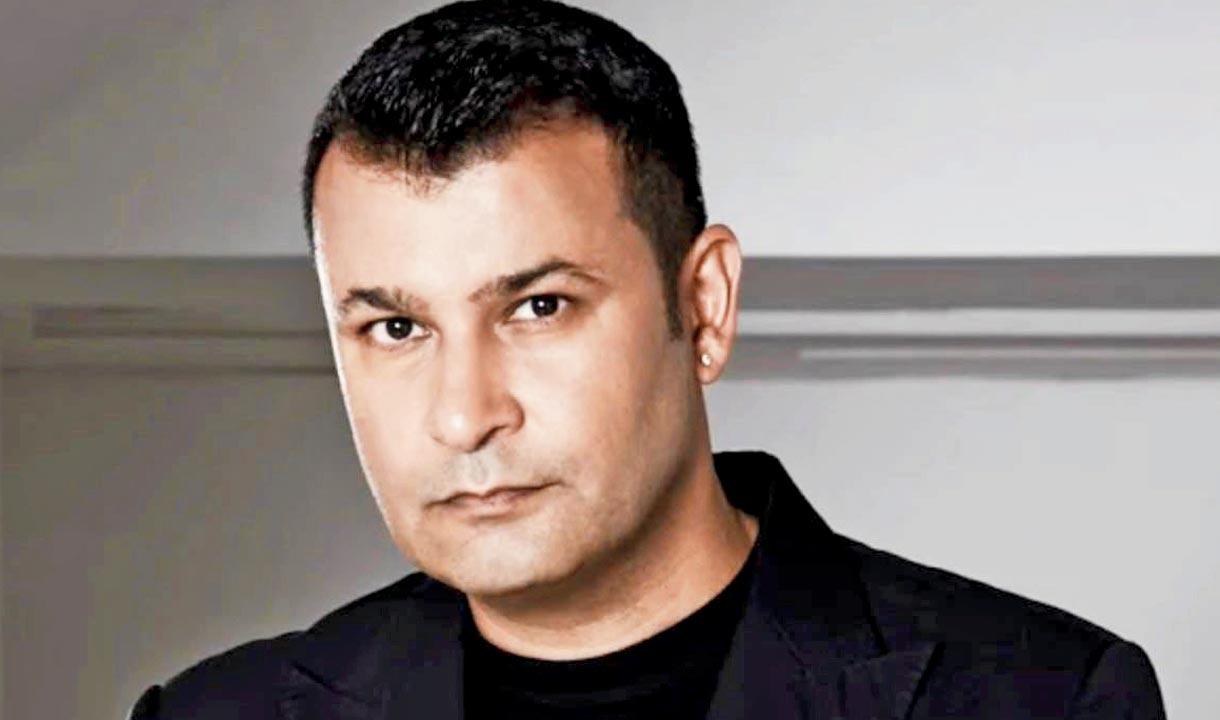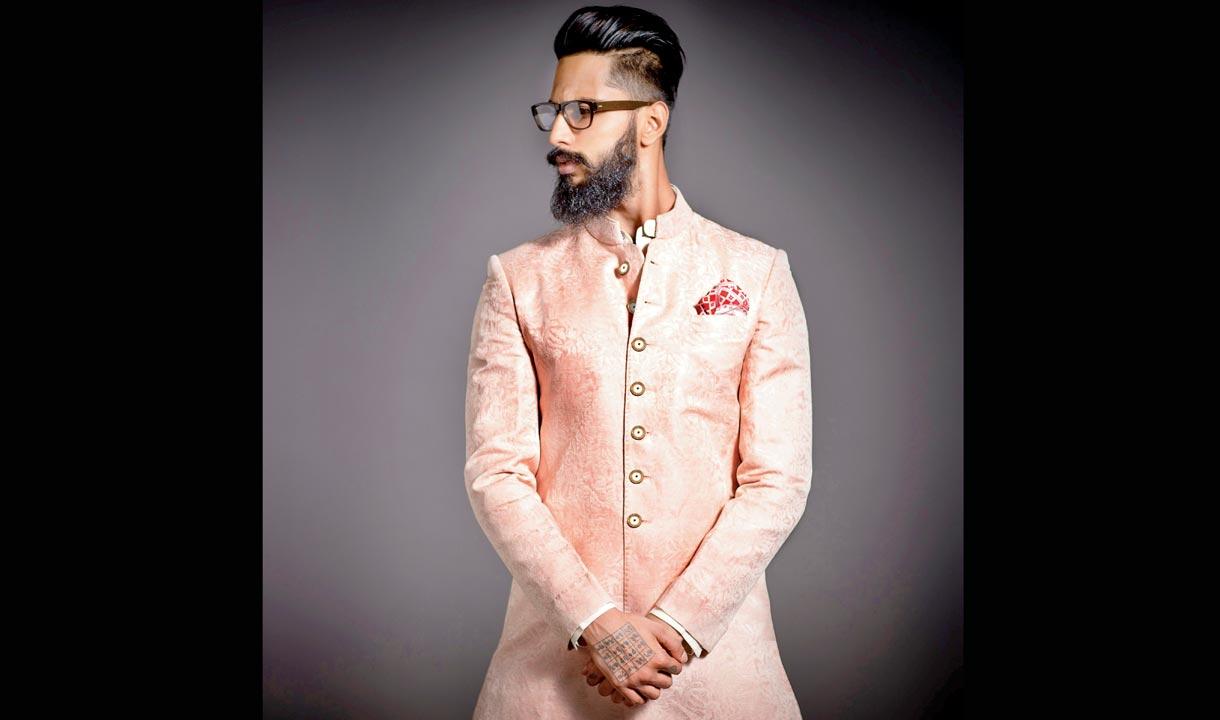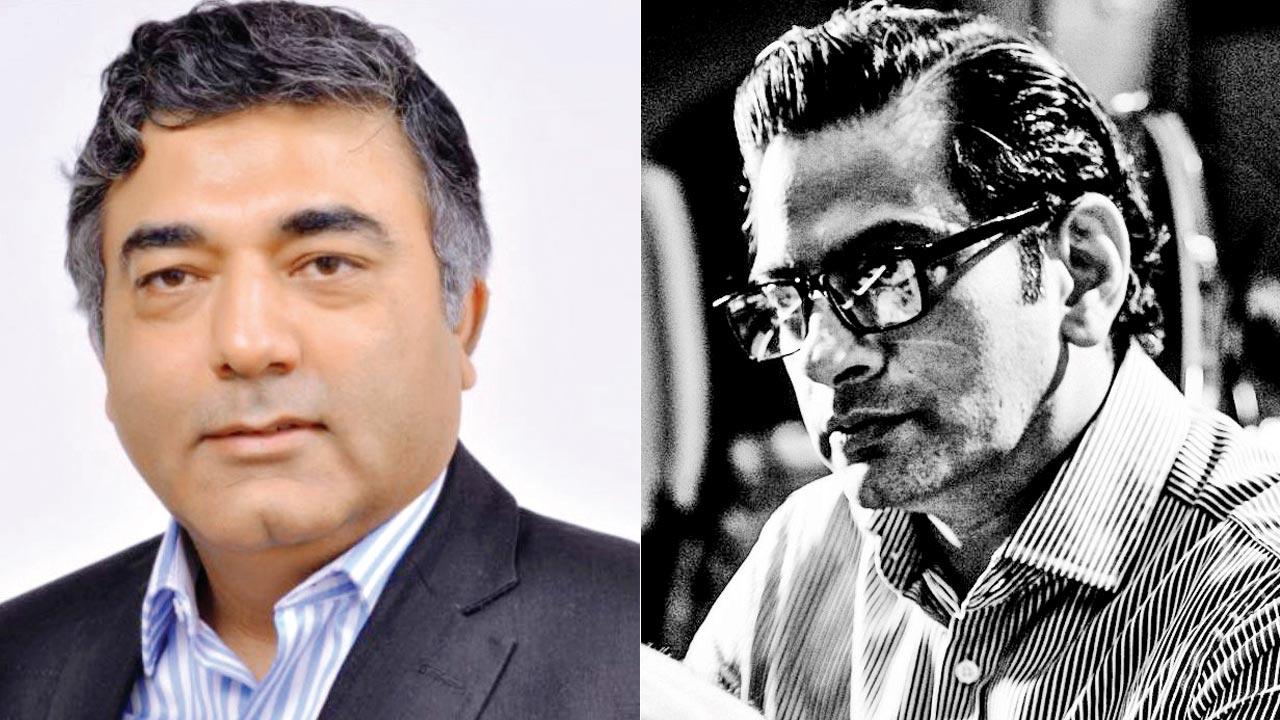The fashion industry is in reset mode with corporate investors swooping in to bring new blood to institution brands. Will it mean streamlining India’s unorganised fashion sector?

That a legacy brand like Tarun Tahiliani partnered with ABFRL was a sign of luxury stepping out of its comfort zone. (In pic) Tahiliani at his bridal couture show in 2019. Pic/Getty Images
 In late 2016 when Raghavendra Rathore discussed his plan with an inner circle of industry peers to pitch his brand to potential investors, “they thought I was mad”. It was commonplace at the time to read about multi-retail chains like Pantaloons tying up with labels Anita Dongre and Ritu Kumar to create a fashion retail model that catered to the mass rather than high-end boutique market. “The decision [to look for investment] was driven by the same instinct as when we decided to discontinue our womenswear line and focus on being the go-to brand for our signature bandhgala. It’s about what you believe in, versus where you see your brand going in the next decade,” says Rathore during a phone interview from Jodhpur.
In late 2016 when Raghavendra Rathore discussed his plan with an inner circle of industry peers to pitch his brand to potential investors, “they thought I was mad”. It was commonplace at the time to read about multi-retail chains like Pantaloons tying up with labels Anita Dongre and Ritu Kumar to create a fashion retail model that catered to the mass rather than high-end boutique market. “The decision [to look for investment] was driven by the same instinct as when we decided to discontinue our womenswear line and focus on being the go-to brand for our signature bandhgala. It’s about what you believe in, versus where you see your brand going in the next decade,” says Rathore during a phone interview from Jodhpur.
ADVERTISEMENT
Sometime in mid-2018, in a deal described as the first three-way collaboration, Italian luxury menswear brand Ermenegildo Zegna and Reliance Brands Limited (RBL retails Zegna in India) announced an investment in RR Jodhpur, Rathore’s bespoke brand. “The artist in me always thanks the business side of me,” Rathore says modestly. “Although there’s a huge appetite for bespoke menswear, I can appeal to just 10 per cent of India’s customer base. But with investment, I can scale up to 30 per cent.”
 A look by Ashish N Soni
A look by Ashish N Soni
A little over five years in and his long-term goal is looking a lot smarter than what Rathore’s peers expected. In February, his brand in partnership with RBL scaled into an ecommerce business with a ready-to-wear line called RR Blue.
The news of RBL signing a “definitive agreement to invest (either by itself and/ or through affiliates) in the storied Abu Jani and Sandeep Khosla brand for a 51 per cent majority stake” a fortnight ago, is the latest in a series of transactions that underscore the growing interest in long established fashion houses. Operating on a combination of joint ventures, equity investments and strategic partnerships, RBL’s network of boutique brands already includes Satya Paul, Ritu Kumar, Manish Malhotra, Abraham & Thakore, Anamika Khanna and Rahul Mishra.
 Ashish N Soni
Ashish N Soni
“I am privileged to be the first designer to align my brand with investors. It was sweet of Tarun to call me a trailblazer,” says Rathore of his colleague and confidant Tarun Tahiliani—who in 2021 partnered with Aditya Birla Fashion and Retail Ltd. (ABFRL) to launch Tasva, an affordable Indian menswear line. The company has also invested in Sabyasachi Mukherjee and, Shantnu and Nikhil, besides acquiring 51 per cent stake in Masaba Gupta. “If we had this discussion in 2001, I’d have dismissed it as fiction. But the changes that have unfolded in the last five years have been tremendous, particularly the escalation in data-driven technology,” observes Harminder Sahni, founder and managing director at Wazir Advisors. Though it’s too soon to issue a prediction on the future of partnerships, “some will definitely fail, that’s the law of averages,” he reasons.
After a spell in the US, Sahni, then a young investment advisor, returned to India in 2000 determined to map the Indian designer retail market as part of a project. His team came up with an obligatory number of Rs 155 crore—a literal drop in the ocean as the Indian textiles and apparel figure sat at Rs 47,500 crore. “A leading designer brand’s turnover was around Rs 1-1.5 crore! Which was ironic because some of them are very talented. I arranged for a meeting between Ritu Kumar and Madura Fashion & Lifestyle [now acquired by ABFRL],” Sahni recalls. It didn’t go as expected, with Sahni characterising the two partner temperaments as chalk and cheese. He moved on to focus on managing his firm, only to get back to working with designers when Rathore approached him in 2016. His firm has since worked closely on deals for Shantnu and Nikhil, Abraham & Thakore and Masaba Gupta, and “occasionally” with Tahiliani. “Less than 1000 days ago, Tarun told me that an affordable line would not sit well with his exclusive image. With Tasva however, he seems to have realised the market potential,” he says.
 A bandhgala look by RR Jodhpur
A bandhgala look by RR Jodhpur
Sahni explains simply that it’s up to the designer to decide whether s/he wishes to remain a designer. “Because one day, you might realise that you can do multiple things within the brand until you are hit by the next question: why only have one brand? Why not become a business owner, a promoter perhaps, owning multiple brands?”
The advantages are obvious: the ability to grow and expand within a single brand while offering disparate products such as ready-to-wear, home décor or beauty to reach a variety of consumers with less risk to the parent brand, and “retail expansion without taking loans. Finding a right partner is like finding a big brother”, Rathore says. If the last 30-odd years of Indian fashion has taught us anything, it is that “we are an unorganised sector,” says Ashish N Soni, the designer of the namesake veteran brand that celebrated three decades in March. The pandemic also brought the industry to a tipping point. “There’s strength in numbers, and with investors playing the role of aggregators, I hope this marks the beginning of an organised sector. By drawing from each other’s strengths and expertise, the right combinations can supercharge and benefit both partners.”
 Harminder Sahni and Raghavendra Rathore
Harminder Sahni and Raghavendra Rathore
Sahni credits Kolkata talent Sabyasachi here. “Instead of being fussy about his status as a luxury brand, he used it to his advantage”. After all, the backstory of building a successful business is about heritage luxury. And there’s power in recognition. “Tarun Tahiliani or Sabyasachi Mukherjee are brands with a strong heritage. There is a fascination and attraction to investing in a recognisable name and talent, they not only bring a lot of desire and fame but also a great head-start for corporates who have historically been associated with mass-focused businesses like Western workwear. Which makes it less about the designer coming a few steps down to create ready-to-wear and more about corporates stepping up to luxury.”
Everybody appreciates a good story. One can’t possibly deny the pull of headlines like these: Can Manish Malhotra become India’s Michael Kors?; or Can a brand like Abraham & Thakore (revered for its work with textiles) become the new FabIndia?
In modern fashion storytelling, the recent flurry of corporate investment means that India’s first generation of institution brands have not only secured a legacy that outlives one-off collaborations, next season or next year but also a chance to recreate and refresh themselves. “It’s a sort of reversal of fortune for the old guard and speaks to the power of experience. Chalo, our experience has finally worked in our favour,” laughs Soni.
An industry insider requesting anonymity, says: “The old coterie is also chasing their last bloom” and goes on to recall the time when iconic star Katharine Hepburn was lured out of her semi-retirement for the 1981 Hollywood film, On Golden Pond. Hepburn made off winning her fourth best actress Oscar for the role. Then there’s a young designer who echoes the collective sentiment that suggests that the old guys have got a second chance. “It’s not like they [investors] are betting on a new app or gizmo, is it? The proof of concept lies in the fact that nobody can question their ambition as these brands have been around for decades and withstood the test of time.”
Sahni says, “Veteran brands have become immortal now. Satya Paul is not with us anymore but his namesake brand lives on.”
 Subscribe today by clicking the link and stay updated with the latest news!" Click here!
Subscribe today by clicking the link and stay updated with the latest news!" Click here!








